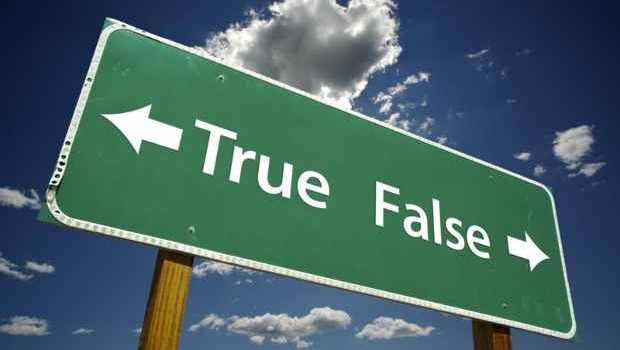Nick Hayes: Myth-busting and conquering cultural shifts
Published on July 10th, 2014
Nick Hayes, a career consultant and research expert, is never short of opinions when it comes to sailing. After volunteering at various sailing clubs, and assisting with their surveys, he did a significant global qualitative research project from 2006-08, interviewing 5,800 sailors globally, 1,800 nationwide.
The project asked how sailors entered the sport, why, how long they had been in it, how long their family had been in it, and where were they heading. That sparked the book, Saving Sailing, which he wrote in 2009.
Sail America, the trade association for the US sailing industry, published this interview with Nick…
What are some ways the sailing industry can attract new sailors and ultimately sailboat buyers?
NH: I didn’t write this book to help sell boats. What I care about is that moms and dads and aunts and uncles and kids spend more time outdoors. That may not mesh with industry goals, but we do have some common interests. So here’s what I think is happening, whether the industry supports it proactively or not:
There is a revolution going on in the sailing right now. Adult women are entering the activity as newcomers. By far, the fastest growing segment are women 25 to 45: sometimes recently divorced, sometimes married, sometimes they’ve moved to a new city. She’s entering the sport on her own initiative. She does so because friends connect her, or for social reasons, or for the excitement it brings.
You’ve written more than once about adult women being the new demographic in sailing. Can you talk a bit more about that?
NH: When you look at these newcomers carefully, you realize, they don’t want to be marketed to with color-coded cushions or microwaves or told it’s a lifestyle. We are in the place where old product marketing ideas are going to fizzle. Sailing isn’t a product. It’s what people do.
The products are things that make sailing more fun or accessible. This word “lifestyle” just needs to disappear. It causes this new group of sailors to recoil and feel demeaned.
What do you do then? There’s a whole bunch of different ways the industry can innovate. These newcomers don’t typically enter the sport through the old institutions; they don’t join yacht clubs, for example. They start when a friend on Facebook says “Hey I’m heading out, wanna do this? Meet me at the dock at 7.”
Once they start, they commit deeply. They try to learn voraciously, maybe because they’re starting late or older. Industry folks should help clubs become schools; places to learn new techniques. That is the central need right now.
What are some ways sailing programs can nurture sailors and potentially transform a kid who turns into an adult who reminisces about racing in the summer to a kid who turns into an adult who spent summers sailing, loved it, bought a sailboat, and will raise his or her kids to be sailors?
NH: The solution depends on that demographic I talked about. Consider a recently divorced 35-year‐old woman who experiences sailing through friend: perhaps she shares custody to an 8-year-old son maybe halftime. You can bet they are going to go sailing but only as long as she has been able to learn how she and her son can be safe. She needs suggestions to make this work. So curriculum should include, for instance, what to wear, what to do, and what to pack the first time you take your 8 year old sailing. Do you take popsicles or not?
I think the deep family connection isn’t because the kids start sailing, but because the parents start and bring their kids.
The shift would be to make them ready to do this as parents. You get a ton of long-term value out of this. The Baby Boomer who never quit sailing in the last 35 years is there because he’s never not sailed. He started as a kid with his uncle or his grandparents or his mother and father and he still does it nostalgically.
The most effective way to build lifeline sailors is to embrace and support the most avid newcomer the sport has had in 35 years.
If you ask anybody that cares about an activity, like fishing, praying in church, or sailing, why fewer people do it, the answer is you will always get is the price is too high, or access is too low. The data revealed a correlation that blew my mind and made me want to write the book.
Sailing started to become popular after WWII. It hit its peak in ’79 and then it collapsed. The collapse was as steep as its ascent. As sailing was increasing, people were doing it in family groups. In ’79, all of a sudden things shifted. We had two incomes, moved further away, and started watching cable TV. And clubs and schools separated the adults and kids in sailing. The kids are at lessons during the day and adults go racing or social sailing in the evening. The inter-generational meaning was lost.
In 1979, 80% of the time, we were sailing in family groups.
By 2009, only 10% of the time, we were doing it in family groups.
That’s the reason I wrote the book. It’s about culture, not marketing. We don’t have a scarcity of kids in sailing. We have a scarcity of parents in sailing, but they’re interested in trying.
If you go at it by building youth programs, you have the exact same success rate as any other youth program. How many of us still play the piano after taking piano lessons as a kid?
The number one thing I wanted to do was reinsert the word “family” into the sport. Introduce a new way of thinking looking forward that would give us a chance at doing this better. One you do that, you can start to focus in innovation in curriculum, or clubs, or the financial models of owning or storing a boat.
The America’s Cup last summer in San Francisco attracted a lot of media attention, but you published in Scuttlebutt some research and analytics refuting the idea that AC34 would be the shot in the arm the sailing industry needs. What role do you see social media and screen time playing within the sailing world, if any?
NH: Here’s how YouTube doesn’t work: push media, like TV or cable will never create demand for sailing. Tennis doesn’t grow after Wimbledon. You get a few racket sales, but you don’t see more players.
If you think of YouTube as a channel for spectator events, it doesn’t fly. But turn it upside down and YouTube is where you’ll find sailors sharing their selfies. When I saw my kids posting GoPro videos from their Lasers, I realized that selfies are going to destroy the rulebook.
A GoPro on the bow of the dinghy is transforming the sport. Everybody stars in their own movie, connects their friends to what they’re doing. And then the friend wants to go.
I believe this little gadget is as important to sailing as Jack and Jackie sailing on the cover of Life magazine in the ’50s.
Do you see it creating a new type of racing or changing the sport overall?
NH: I think it’s already changing the sport. In the case of the AC34, if the footage is so complicated and unreal, almost nobody feels like they can do it. So nobody tries. But, if it’s footage of two kids planning from point a to point b as fast as they can, or the beer-can racer wiping out captured by a colleague who is working the mark boat, it seems real and accessible. There will always be gamers and rule-makers creating rules that favor the least amount of ultra skilled people. New media changes this game. It says, I can do this and you can too. That’s where all the fun is.
Did you grow up sailing?
NH: My dad wasn’t a sailor. He was fisherman. I caught the bug at sailing camp when I was 7 or 8 years old. I really jumped in my early 20s and have never really left. But I’ve lived the model I discuss. I’ve been married 28 years, and we’ve never not owned a boat.
Our kids were vacation-raised on sailboats in the summer. They would sleep in rockers down below. My eldest was under two the first time she sailed across the lake [Lake Michigan]. I will never forget the first time I was able sail across the lake. I thought I had won the lottery!
We strapped car seats on the stern rail, lathered them in sunscreen, gave them a juice box, and they raced with us. These weren’t our original crazy ideas. We knew there were other people doing it. We thought this was the way to parent.
But everyone else was moving further away from places where they could sail. People were doubling down on cable television, which meant they had to spend time watching it. Most kids were screen-raised, but ours were sailing all the time.
Our two daughters, who are now adults, are much better sailors than I’ll ever be, but more important, they’re role models in the community and as sailors. They are intelligent; they learned resilience; they learned trust; they learned to be humble; and they are fearless.
It was my wife’s genius. She said we wouldn’t change the things that made us happy. We would just involve the kids.
Nick Hayes’ book Saving Sailing is available through his website: SavingSailing.com.










 We’ll keep your information safe.
We’ll keep your information safe.